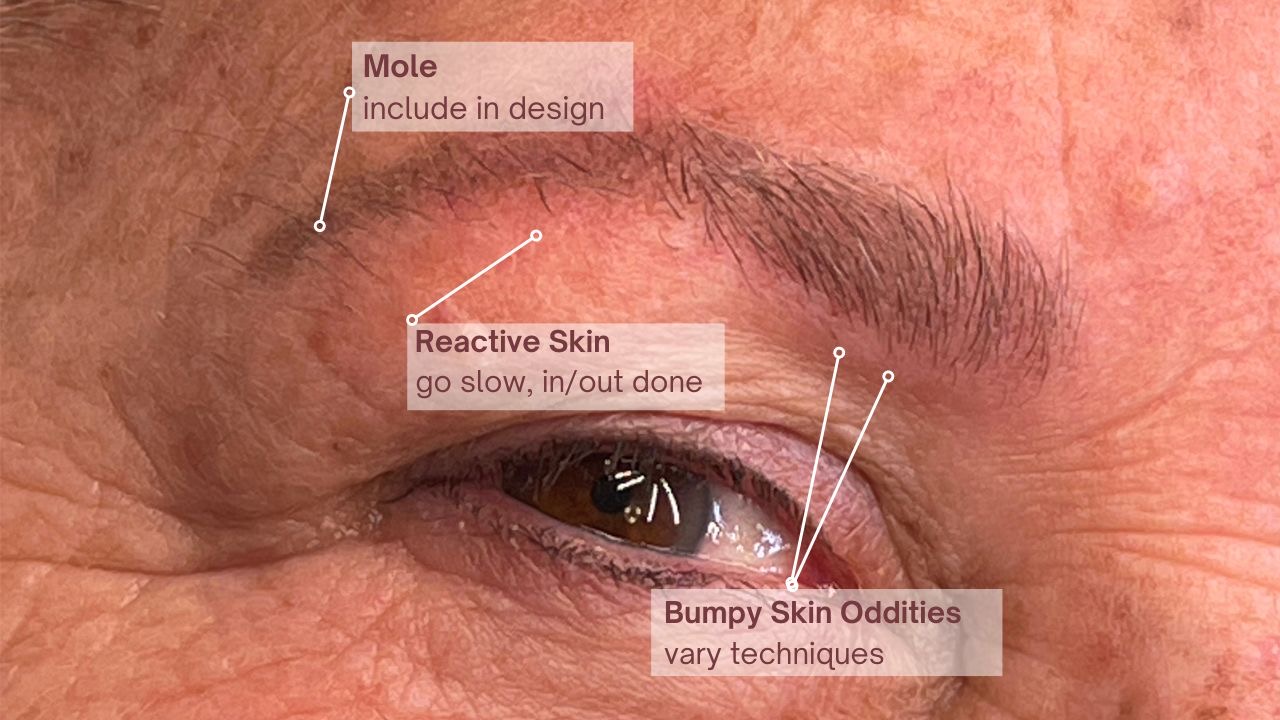Tattooing Challenging Skin Types
May 01, 2023
When attooing over any type of damaged skin, realistic expectations are a must. While permanent makeup can help enhance features and conceal imperfections, it may not completely eradicate the effects of damaged skin.

- MOLES can be incorporated into the design but usually tattooing over a mole isn’t advisable due to unforeseen circumstances such as a mole developing into a cancerous one.
- REACTIVE SKIN aka skin that reddens immediately can be a challenge when reading your ink. I find working slowly and getting in the color with least the amount of passes (that make the skin redder) is a good approach. The approach is In/Out/Done. I may use a larger needle to implant more color quickly, slow my hand speed, or alter techniques to soft pointillism, (with a smaller needle) which doesn’t redden the skin as much as whip or pendulum shading can.
- BUMPY SKIN ODDITIES may or may not take color. I point these areas out to my clients because many aren’t aware they even have oddities in the brows, and they may affect the end result. Most common are sebaceous hyperplasia bumps, chicken pox scars and other scars and the unknown skin oddities. My approach is usually pointillism and usually at the follow up visit. Pointillism is a technique where the needle/s are in and out of the skin. The motion is delicate as to not go to deep. For stubborn areas, I might try to hover the needle barely touching so I can get in more color verses quickly going in and out. Usually, a smaller configuration or a single needle is ideal as to not leave too big of a polka dot. Adjusting speed, pressure, angle during the procedure can make a difference as well.
To protect the skin from the sun I recommend using sunscreen or simply swipe the brows a SPF lip balm.
To your PMU success,

PMU Artist & Needle Specialist
Inside Needle Knowledge
